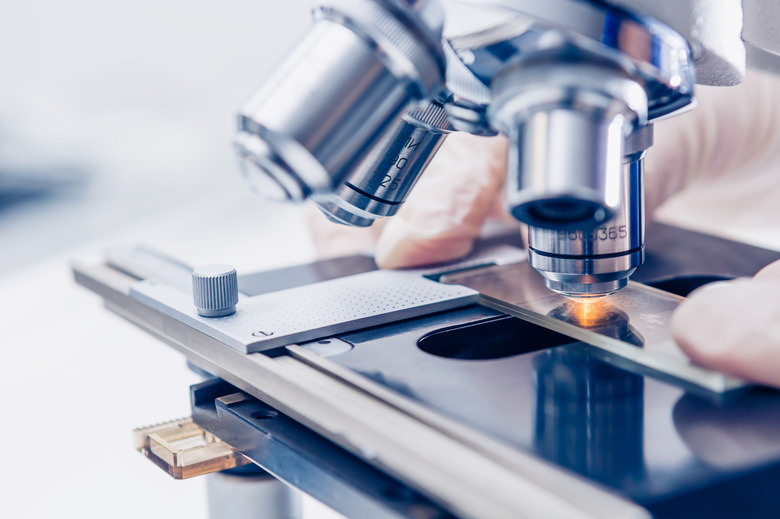Precautions When Using A Microscope
If you are interested in getting a close-up view of the world around you, a light microscope could be the right choice. Light microscopes, which employ compound lenses and light, are commonly used in schools and homes. They work by using two lenses: an objective lens close to the specimen being viewed and an ocular lens or eyepiece. Understanding how to properly use and care for the microscope can ensure years of fun, educational use.
Handling
Handling
Although microscopes may seem sturdy they are actually quite fragile, especially their glass lenses and delicate focusing mechanisms. Microscopes have gone down in price over the past couple of decades, and there are many more microscopes available now that are made with inexpensive materials that may not be as durable as earlier models. Always pick up a microscope using both hands, one hand holding the arm of the microscope and the other supporting its base. Although it may seem tempting, never grab or carry a microscope by its eyepiece. When you put the microscope down again, be sure to do so on a flat surface, such as a tabletop.
Use
Use
Before using your microscope, look over its various mechanical and optical parts. Even light microscopes differ in how they work, so familiarize yourself with the operations of the particular model you have. Understand what each knob does before operating it, to avoid overworking or straining the mechanisms. Position the arm of the microscope toward you and the stage – that flat platform used for holding the specimen – directed away from you. If your microscope has built-in light, be sure it is powered on before using it for viewing. Use your microscope in a well-lit room or outdoors. Microscopes often use a mirror to direct available light to the specimen platform, so if you don't have enough light it will be difficult to view your specimen and can cause eye strain. When using your microscope at its highest magnification, some models require special preparation of the specimen or lens.
Cleaning and Care
Cleaning and Care
If your microscope has a cover or case, always put it in place when you aren't using the device. Wet or dirty slides should never be put on the stage, which should always be kept dry. When cleaning your microscope, unplug it first, if applicable, and then clean the outside using a damp, soft cloth only. Never use a dry cloth or paper towel to wipe any optical surface as you could scratch a lens. Use an air blower or a camel hair brush to whisk away dust. If there is dirt on the eyepiece that can't be removed with air or the brush, gently wipe it with a piece of clean cotton. If you must clean the objective lens, use xylitol or absolute alcohol. Never try to clean or take apart the internal pieces of the microscope.
Cite This Article
MLA
Weaver, Lori. "Precautions When Using A Microscope" sciencing.com, https://www.sciencing.com/precautions-using-microscope-7379695/. 19 April 2018.
APA
Weaver, Lori. (2018, April 19). Precautions When Using A Microscope. sciencing.com. Retrieved from https://www.sciencing.com/precautions-using-microscope-7379695/
Chicago
Weaver, Lori. Precautions When Using A Microscope last modified March 24, 2022. https://www.sciencing.com/precautions-using-microscope-7379695/
